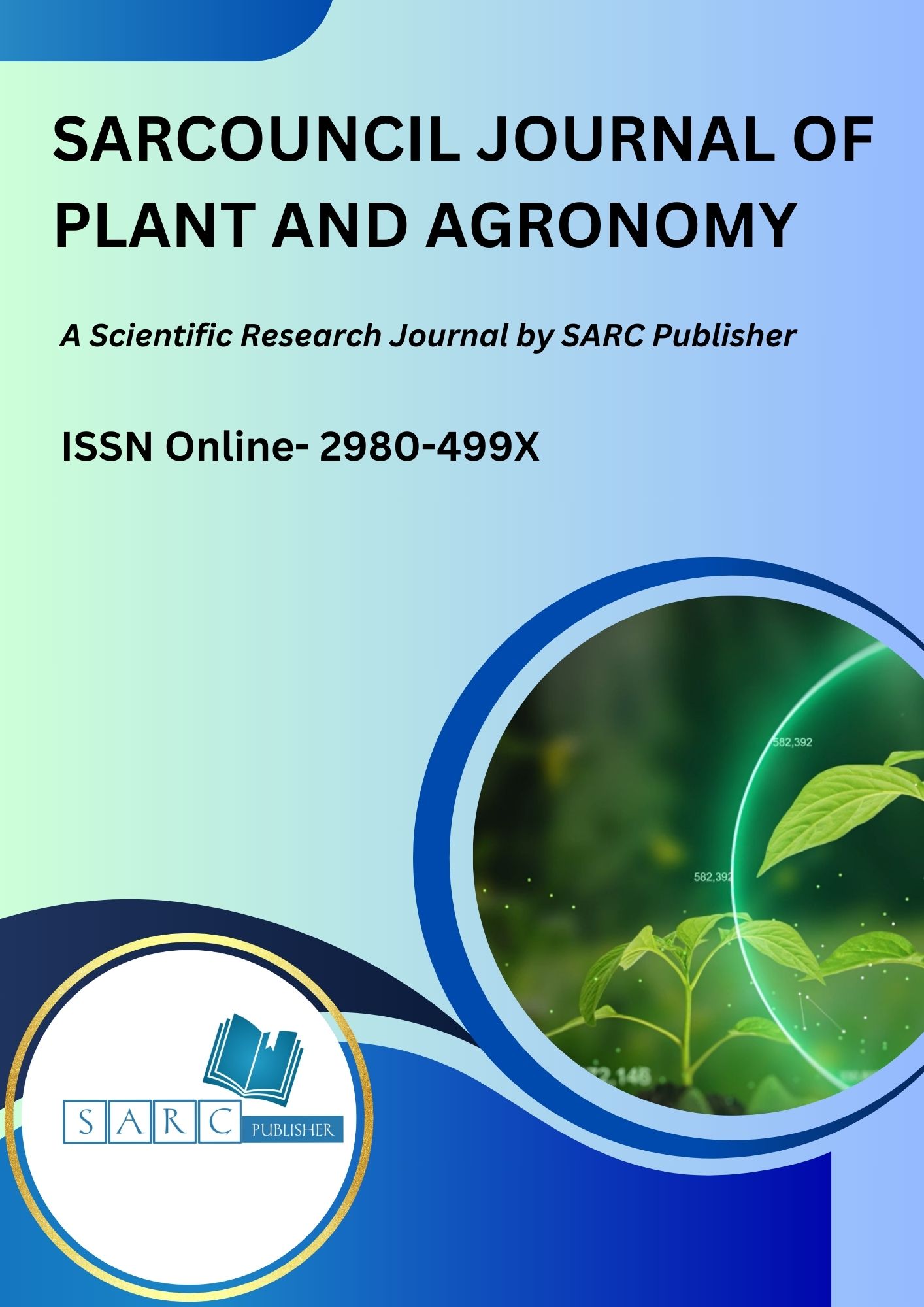Sarcouncil Journal of Plant and Agronomy

Sarcouncil Journal of Plant and Agronomy
An Open access peer reviewed international Journal
Publication Frequency- Bi-Annual
Publisher Name-SARC Publisher
ISSN Print- 2980-4981
ISSN Print- 2980- 499X
Country of origin-PHILIPPINES
Language- English
Keywords
- Plant, Biology, Agronomy, Crop Science, Anthropology, Genetics, Biochemistry, Immunology, Molecular Biology, Virology.
Editors

Dr Hazim Abdul-Rahman
Associate Editor
Sarcouncil Journal of Applied Sciences

Entessar Al Jbawi
Associate Editor
Sarcouncil Journal of Multidisciplinary

Rishabh Rajesh Shanbhag
Associate Editor
Sarcouncil Journal of Engineering and Computer Sciences

Dr Md. Rezowan ur Rahman
Associate Editor
Sarcouncil Journal of Biomedical Sciences

Dr Ifeoma Christy
Associate Editor
Sarcouncil Journal of Entrepreneurship And Business Management
Root Rot Disease in Legumenous Plant Pigeon pea Caused by Macrophomina phaseolina (Tassi) Goid and its Management
Keywords: Macrophomina phaseolina, Legumenous Plant Pigeon pea, Rot Disease
Abstract: The fungi Macro phomina phaseolina (Tassi) Goid is a soil- and seed-borne pathogen which causes charcoal rot and various rots and blights of more than 500 crop plant species. The dry root rot (DRR) also called as charcoal rot which causes yield loss upto 25-55 per cent. The pathogen is necrotroph and infects a wide range of crops. It is observed that mycelium of M. phaseolina in cotyledons, plumule and radicle, in the naturally infected seeds of Pigeon pea and cowpea. The disease symptoms are clearly visible from the time of emergence and can be evaluated at various stages of development of the plant. The mechanical plugging of the xylem vessels by microsclerotia, toxin production, enzymatic action and mechanical pressure during penetration lead to disease development. In the Management of M. phaseolina purpose to reduce the number of sclerotia in soil or to decrease the contact of the inoculum and the host. Soil solarization can be a cost-effective method for management of soil borne diseases. The disease inhibition by biocontrol agents such as Trichoderma harzianum, T. viride and Bacillus subtilis are the sustained manifestation of interactions among the plant, the pathogen, the biocontrol agent, the microbial community on and around the plant and the physical environment and considerably inhibited growth of M. phaseolina. Essential oils and plant extracts contain a multitude of bioactive substances against fungi, bacteria and nematodes. It has been reported that neem oil, turmeric and garlic was effective against M. phaseolina in in vitro condition. Chemical control is an effective method when seed treatment and foliar spray of carbendazim, topsin M-70, captan, thiram, mancozeb, copper oxychloride against root rot and leaf blight (Macrophomina phaseolina ) topsin M-70, captan, thiram, mancozeb, copper oxychloride against root rot (Macrophomina phaseolina ). As non-chemical alternative methods can be time-consuming and less effective against soilborne plant pathogens. Chemical control is an effective method of controlling some soilborne diseases in agricultural crops. Varoius workers are reported compatibility of biocontrol agents with fungicides and found that Carbendazim and biocontrol agents Trichoderma viride, T. harizianum were found effective under in vitro and pot.
Author
- Dr Shyam singh
- Associate Professor Department of Botany Meerut College Meerut

